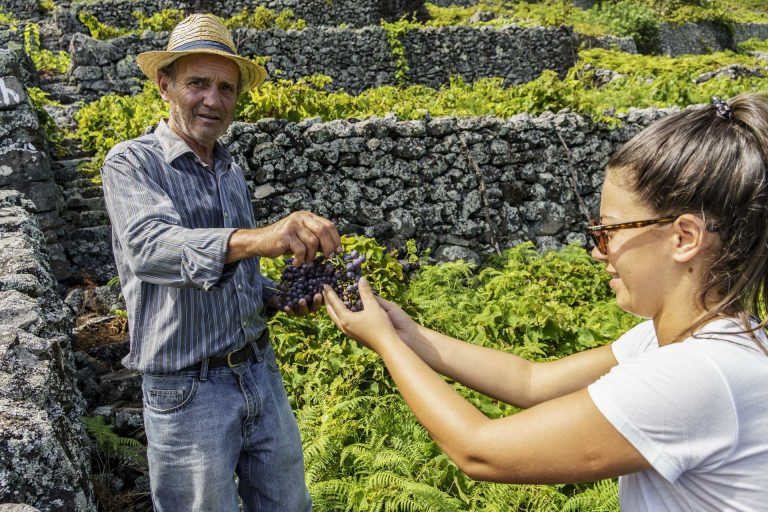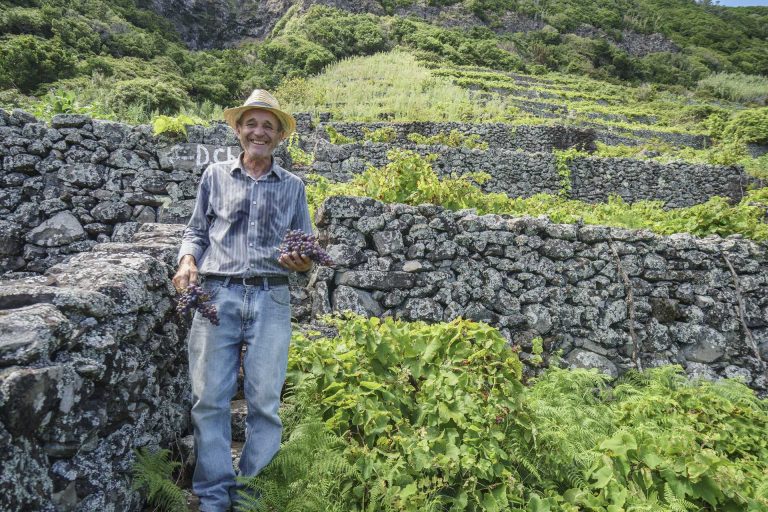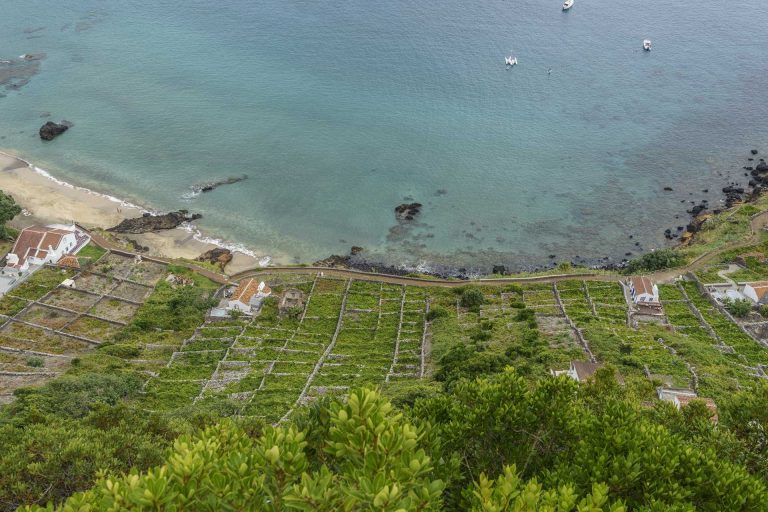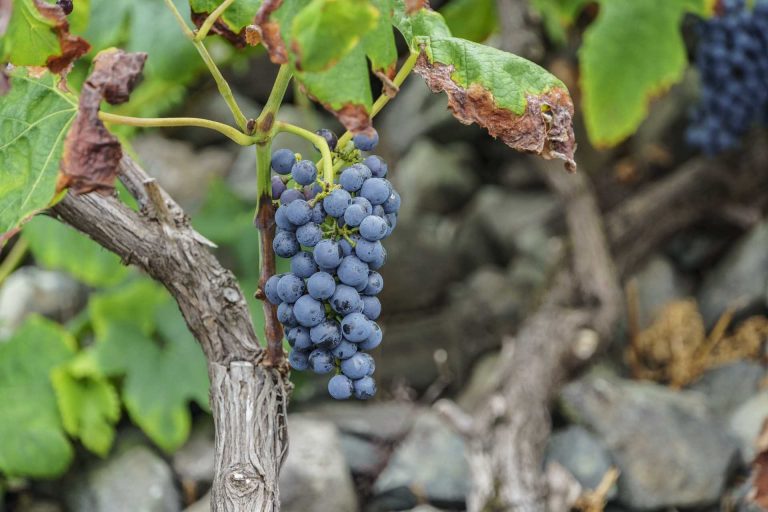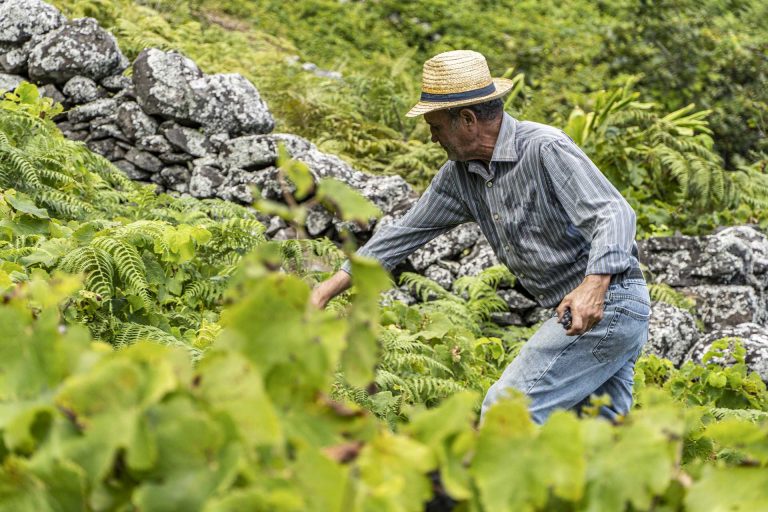Santa Maria
São Lourenço
Duration
Half-day (3 hours)
Total distance
Does not apply
Difficulty
Easy
ITINERARY
RVI01SMAGrowing vineyards in Santa Maria is even more unlikely than in the Biscoitos region in Terceira Island, or in the Lajidos in Pico Island. There were few options left for the islanders, but to plant the vineyards on the island's slopes, in terraces that unfold up the cliffs. The result? A stunning landscape overlooking the sea.
In São Lourenço Bay, turning your back to the sea, let your eyes get lost amidst the green tones of its terraces, some completely abandoned, others now recovered, in a labour that is inaccessible to machinery, relying solely in the strength of those who keep dedicating themselves to maintain this legacy alive. In São Lourenço, we suggest you to ask around for Mr. António da Margarida, former builder of the stone walls (curraletas), who is willing to share all the secrets and tell you about the stages of this arduous work of replacing stone by stone.
The best way to celebrate this incredible feat, accomplished by the Azoreans' ancestors is, undoubtedly, to fall in love with the wine produced here, by over 300 small producers, who keep this century-old tradition alive in their small vineyard terraces.
After a short walking trail to appreciate this incredible wine landscape, we suggest an experience in the vineyard and a wine tasting with the Producer Maurício Travassos, who works the lands that belonged to his grandfather in São Lourenço, as well as his father's lands in Relva D’Além. For more than 10 years, he has dedicated himself to take care of these vineyard plots, that have been in the family for generations, producing only for his own consumption or to share with family and friends. Maurício Travassos keeps his doors open, welcoming those who want to know a little more about the wine-growing history of his island, or taste the wine that he produces out of stubbornness. Those who wish to “roll up their sleeves” and challenge themselves in various agricultural tasks throughout the year are also welcome: in January, weeding, in March, pruning and in September, the harvest.
Points of Interest
NOT TO MISSDon't leave out:
• Museum of Santa Maria, in Santo Espírito


